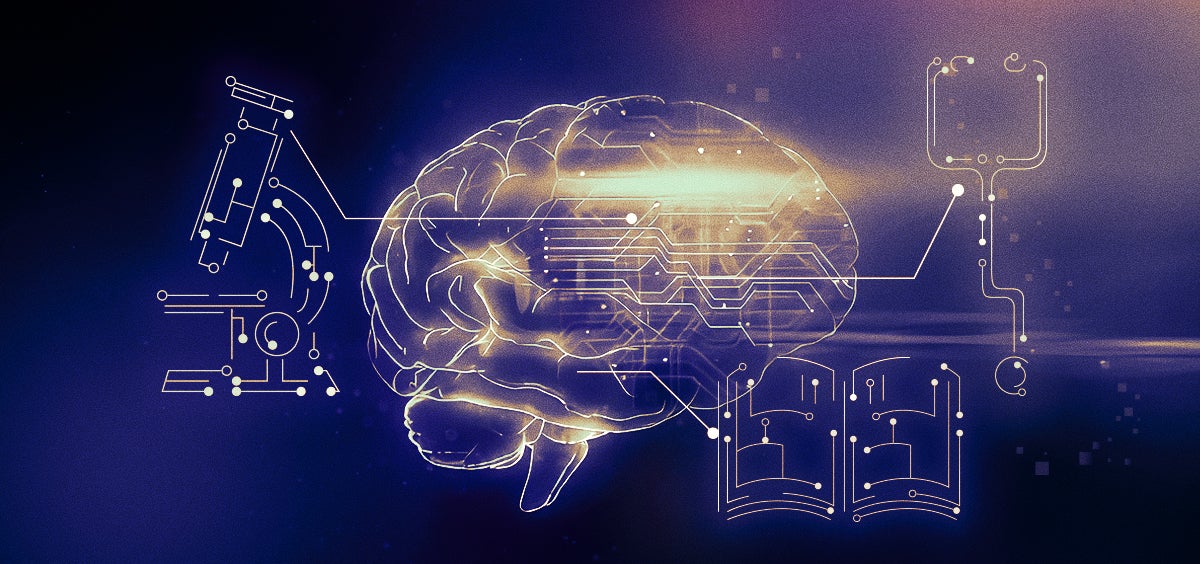In the last decade, blockchain technology has emerged as one of the most groundbreaking innovations, making waves across various industries—from finance and supply chains to healthcare and entertainment. Originally designed as the underlying technology for Bitcoin, blockchain has grown into a multi-purpose tool with far-reaching applications. As we move further into the digital age, blockchain’s potential to revolutionize how we manage data, facilitate transactions, and establish trust is becoming more apparent.
In this article, we’ll explore what blockchain is, how it works, its benefits, real-world applications, and some of the challenges it faces. Additionally, we will answer some frequently asked questions (FAQs) to provide a clearer understanding of this transformative technology.
What is Blockchain?
At its core, blockchain is a decentralized, Revolutionizing Trust and Transparency in the Digital Age distributed digital ledger that records transactions across multiple computers. Unlike traditional centralized databases where a single entity controls data, blockchain operates through a network of peers, each holding a copy of the entire ledger. This distributed structure makes it nearly impossible to alter or hack data without the consensus of the network.
Key Characteristics of Blockchain:
- Decentralization: There is no central authority controlling the blockchain; instead, it is maintained by a network of nodes (computers) that validate and record transactions.
- Immutability: Once data is added to the blockchain, it cannot be altered or deleted. This makes it extremely secure and trustworthy.
- Transparency: Every participant in the blockchain network can see the transactions, providing full transparency.
- Consensus Mechanisms: Blockchain relies on consensus algorithms like Proof of Work (PoW) or Proof of Stake (PoS) to verify transactions and secure the network.
- Cryptographic Security: Blockchain employs cryptography to secure data and ensure the integrity of transactions.
How Does Blockchain Work?
To understand how blockchain works, let’s break it down step by step:
- Transaction Initiation: A user initiates a transaction, which could involve the transfer of cryptocurrencies, assets, or data.
- Validation: The transaction is broadcast to the network of computers, known as nodes. Each node verifies the transaction according to the blockchain’s rules (e.g., checking that the sender has the funds to transfer in the case of cryptocurrency).
- Creation of a Block: After validation, the transaction is grouped with others into a “block.”
- Consensus: The block is then sent to all other nodes in the network. The nodes must agree (through a consensus mechanism like PoW or PoS) that the block is valid before it is added to the blockchain.
- Addition to the Chain: Once consensus is reached, the block is added to the blockchain. Each new block contains a reference (hash) to the previous block, forming a chain of blocks (hence the name “blockchain”).
- Permanent Record: After a block is added to the blockchain, it is nearly impossible to alter. To change any information, a malicious actor would have to change the information in every block across all nodes in the network, which is practically infeasible due to the decentralized nature of blockchain.
Benefits of Blockchain Technology
Blockchain has several inherent benefits, which contribute to its growing adoption across various industries.
1. Decentralization and Trust
Blockchain eliminates the need for intermediaries, such as banks, insurance companies, or notaries, to verify transactions. Instead, trust is distributed across a network of nodes. This reduces the risk of fraud and manipulation and allows for secure, peer-to-peer transactions.
2. Transparency
Every participant in a blockchain network can view the complete transaction history, ensuring full transparency. In business, this is particularly valuable for tracking the provenance of products, ensuring ethical sourcing, and maintaining the integrity of supply chains.
3. Security and Immutability
Due to its cryptographic nature, blockchain provides robust security. Once a block is added to the blockchain, altering it would require a majority of the network to agree on the change, making it nearly impossible to tamper with data.
4. Efficiency and Cost Reduction
Blockchain eliminates the need for intermediaries, reducing transaction costs and the time it takes to process transactions. Traditional systems, especially in cross-border payments, often involve banks and clearinghouses, which can slow down the process and add fees. Blockchain can cut these out, making processes faster and cheaper.
5. Reduced Risk of Fraud
Since blockchain relies on consensus mechanisms and encryption, it reduces the risk of fraud and tampering. Each transaction is verified and recorded in a public ledger, making it much harder for bad actors to manipulate the system.
6. Decentralized Data Storage
Blockchain provides a decentralized alternative to traditional data storage systems. This makes it resistant to single points of failure, such as hacking or natural disasters, and ensures that data remains secure and available even if part of the network goes down.
Real-World Applications of Blockchain
Blockchain’s unique features make it a versatile technology with a wide range of applications across different sectors.
1. Cryptocurrencies
The most famous application of blockchain is cryptocurrencies like Bitcoin, Ethereum, and Litecoin. These digital currencies allow for decentralized, peer-to-peer financial transactions without the need for traditional banking intermediaries. Cryptocurrencies have gained immense popularity due to their potential for fast and secure transfers, low fees, and privacy.
2. Supply Chain Management
Blockchain is revolutionizing supply chain management by providing transparency and traceability from production to delivery. It allows businesses and consumers to track the entire lifecycle of a product, ensuring ethical sourcing and reducing fraud in industries such as food, fashion, and pharmaceuticals.
Example: Companies like Walmart and IBM use blockchain to track food products from farms to consumers, ensuring the quality and safety of perishable goods.
3. Smart Contracts
Smart contracts are self-executing contracts with the terms of the agreement directly written into code. They automatically execute and enforce terms when predefined conditions are met, removing the need for intermediaries. Smart contracts have applications in real estate, legal agreements, and decentralized applications (DApps).
Example: In real estate, blockchain can automate the transfer of property ownership when both parties meet all conditions stipulated in the smart contract.
4. Voting Systems
Blockchain technology has the potential to make voting systems more secure, transparent, and tamper-resistant. By using blockchain to record votes, governments and organizations can reduce the risk of election fraud, ensure voter privacy, and increase trust in electoral processes.
5. Healthcare
Blockchain can be used to securely store and manage patient records, ensuring that data is accessible only to authorized individuals and cannot be tampered with. This could lead to improvements in patient care, medical research, and privacy protection.
Example: Blockchain could enable patients to have ownership of their health data, granting access to healthcare providers only when necessary, while ensuring the data’s integrity and security.
6. Intellectual Property (IP) Protection
Blockchain can help protect intellectual property by recording ownership and transactions related to patents, trademarks, copyrights, and other assets. The immutability of blockchain ensures that ownership records cannot be altered without the consensus of the network, providing a reliable method for IP verification.
Challenges and Limitations of Blockchain
While blockchain holds enormous potential, it is not without challenges.
1. Scalability
One of the biggest issues with blockchain is its scalability. Blockchain networks, especially those using Proof of Work (like Bitcoin), can become congested, leading to slower transaction times and higher fees as the network grows. This limits blockchain’s ability to handle a large number of transactions at once.
2. Energy Consumption
Blockchain networks, especially those that rely on Proof of Work, require significant amounts of computational power to validate transactions. This results in high energy consumption, which has raised environmental concerns about the sustainability of blockchain, particularly in the case of Bitcoin.
3. Regulation and Legal Uncertainty
Blockchain operates in a relatively unregulated space, and many countries are still determining how to regulate cryptocurrencies, smart contracts, and other blockchain applications. Legal uncertainty can deter adoption, particularly in industries that require strict regulatory compliance.
4. Complexity
Blockchain technology is still complex and difficult for many businesses to understand and implement. While blockchain has been simplified through platforms like Ethereum, the technical barriers to entry remain high for many organizations.
FAQs About Blockchain
Q1: What is the difference between blockchain and cryptocurrency?
A1: Blockchain is the underlying technology that supports cryptocurrencies like Bitcoin. It is a decentralized, immutable ledger used to record transactions. Cryptocurrency is a digital asset that uses blockchain technology to enable secure, peer-to-peer transactions.
Q2: Is blockchain only used for cryptocurrency?
A2: No. While blockchain was initially developed for cryptocurrencies like Bitcoin, it has many other applications, including supply chain management, smart contracts, voting systems, and healthcare.
Q3: What are smart contracts?
A3: Smart contracts are self-executing contracts with the terms written directly into code. They automatically execute when predefined conditions are met, removing the need for intermediaries.
Q4: How does blockchain ensure data security?
A4: Blockchain uses cryptographic hashing to secure data. Once a block is added to the blockchain, it cannot be altered without changing all subsequent blocks, which requires the consensus of the entire network. This makes blockchain highly secure.
Q5: What are the main challenges of blockchain adoption?
A5: The main challenges include scalability, energy consumption, legal and regulatory uncertainty, and complexity. These challenges must be addressed for blockchain to achieve widespread adoption.
Conclusion
Blockchain technology has proven to be a transformative innovation, providing



